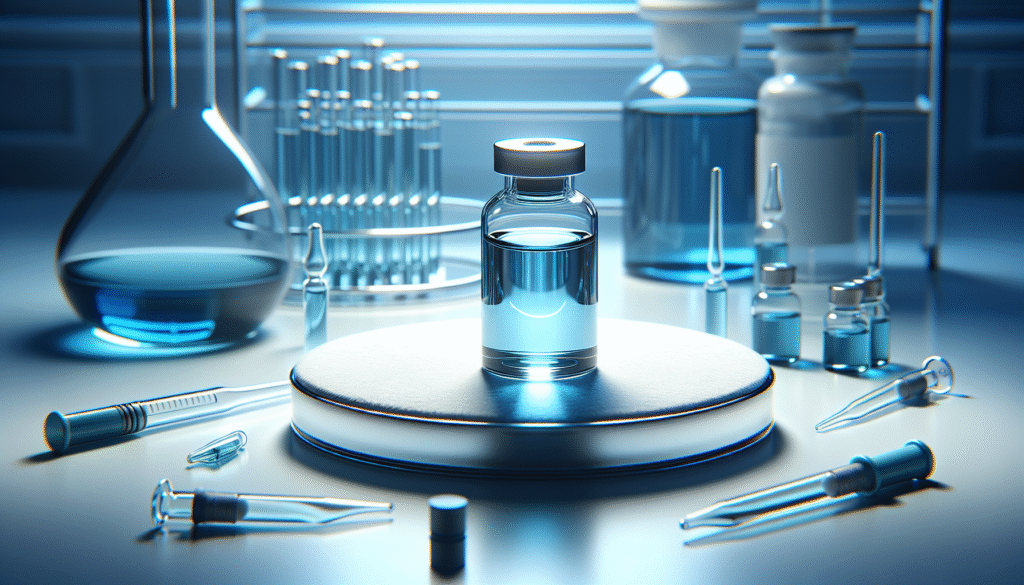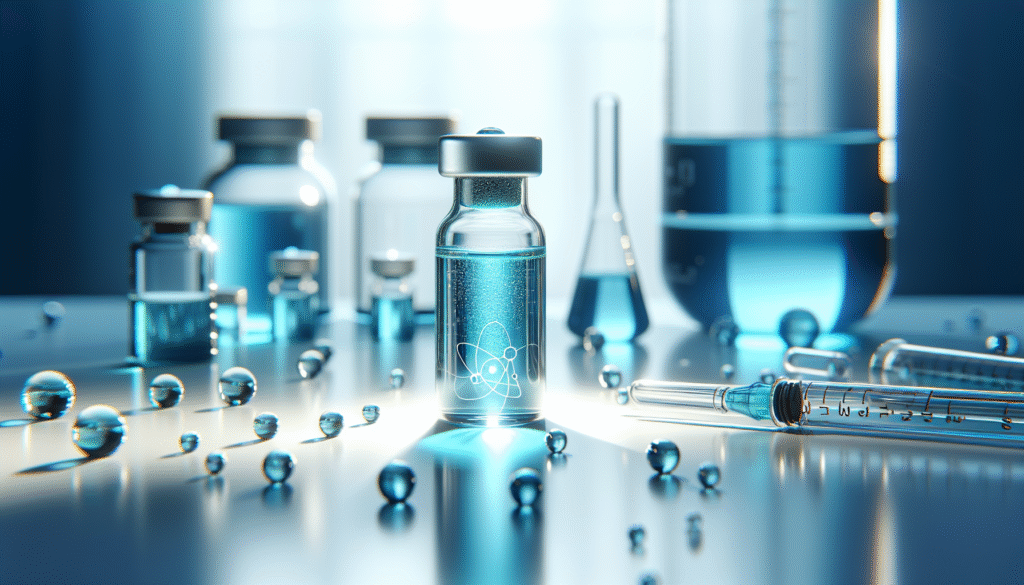
Have you ever wondered about the therapeutic applications of methylene blue, a compound primarily known for its vibrant blue hue? This article will provide a comprehensive overview of methylene blue’s uses in therapy, its mechanism of action, and its benefits in various clinical settings.
What is Methylene Blue?
Methylene blue is a synthetic dye that has been used for over a century in various medical and scientific applications. Originally developed as a textile dye, it has transcended its initial purpose to become a significant component in medical therapy. It serves various functions, primarily for its properties as a redox agent, indicating its ability to accept and donate electrons.
History and Background
Initially introduced in the late 19th century, methylene blue was adopted in medicine for its antiseptic properties. Its first notable medical application was in the treatment of malaria, and, over time, it has garnered attention for several other therapeutic uses due to its multi-faceted capabilities.
Mechanism of Action
Understanding the mechanism of action of methylene blue can provide insight into its therapeutic potential. It operates primarily as a mitochondrial respiratory chain inhibitor, effectively altering oxidative phosphorylation.
Role as an Antioxidant
Methylene blue functions as an antioxidant, preventing cellular damage from oxidative stress. It can regenerate other antioxidants, such as glutathione, enhancing the body’s ability to combat oxidative damage.
Influence on Neurotransmitter Systems
This compound also impacts neurotransmitter systems, including serotonin and norepinephrine pathways. Methylene blue can inhibit the monoamine oxidase enzyme (MAO), which may increase the levels of these neurotransmitters and contribute to its antidepressant effects.

Therapeutic Applications of Methylene Blue
The versatility of methylene blue allows it to be applied in several therapeutic areas. Below are some of the significant applications:
1. Treatment of Methemoglobinemia
Methylene blue is widely recognized for its role in treating methemoglobinemia, a condition characterized by elevated levels of methemoglobin—a form of hemoglobin that does not effectively carry oxygen.
Dosage and Administration
The typical dosage for adults is 1-2 mg/kg administered intravenously over 5 to 30 minutes. For children, the same dosage parameters generally apply, although weight considerations must be taken into account.
| Patient Group | Dose (mg/kg) |
|---|---|
| Adults | 1-2 |
| Children | 1-2 |
2. Antidote for Certain Poisonings
Another vital application is as an antidote for specific types of poisoning, particularly those involving agents like aniline dyes and nitrites. The mechanism involves the reduction of methemoglobin back to hemoglobin, thereby restoring the blood’s oxygen-carrying capacity.
Case Examples
Instances of poisoning that necessitate methylene blue treatment often include:
| Poisoning Agent | Treatment Notes |
|---|---|
| Aniline Dyes | Administer methylene blue to reduce methemoglobin levels. |
| Nitrites | Similar administration to counteract hypoxia. |
3. Use in Surgery
Methylene blue is utilized in surgical settings, particularly during sentinel lymph node biopsies. In this context, the dye serves as a vital marking agent that helps surgeons identify lymph nodes.
Surgical Applications
- Sentinel Lymph Node Biopsy: Clearly delineates nodes for optimal removal.
- Local Anesthetic: It can be mixed with local anesthetics, enhancing visibility during procedures.
4. Neuroprotective Effects
Recent studies have highlighted the potential neuroprotective properties of methylene blue, particularly in neurodegenerative disorders such as Alzheimer’s and Parkinson’s diseases.
Research Insights
- Alzheimer’s Disease: Methylene blue has demonstrated the ability to reduce tau aggregation, a hallmark of the disease.
- Parkinson’s Disease: Enhancements in mitochondrial function may offer therapeutic avenues for managing symptoms.
5. Antimicrobial Properties
Methylene blue exhibits antimicrobial properties and has shown efficacy against various pathogens, including bacteria and viruses. Its application spans from topical antiseptics to potential treatments for systemic infections.
| Pathogen Type | Application Notes |
|---|---|
| Bacteria | Topical treatment for infections. |
| Viruses | Potential antiviral effects studied. |
Safety and Side Effects
While methylene blue is generally considered safe for use in therapeutic applications, it carries potential side effects and contraindications, necessitating a thorough understanding before administration.
Common Side Effects
Some side effects associated with methylene blue administration may include:
- Discoloration of Urine: A benign side effect where urine turns bluish-green, often alarming but non-harmful.
- Allergic Reactions: Rarely, patients may experience hypersensitivity or allergic reactions.
- Serotonin Syndrome: Caution is warranted when administering methylene blue in conjunction with selective serotonin reuptake inhibitors (SSRIs) due to the risk of serotonin syndrome.
Contraindications
Certain populations and conditions may contraindicate methylene blue usage, such as:
- Glucose-6-Phosphate Dehydrogenase (G6PD) Deficiency: Can lead to hemolysis when exposed to certain medications, including methylene blue.
- Pregnancy and Breastfeeding: Caution is advised due to limited research.

Research and Future Directions
Emerging studies are continually evolving our understanding of methylene blue’s potential applications. Ongoing research involves investigating its effects on various medical conditions, including psychiatric disorders, metabolic syndromes, and even cancer therapies.
Clinical Trials
Several clinical trials are underway to assess methylene blue’s efficacy in treating:
- Chronic Fatigue Syndrome: Aimed at understanding its effects on energy metabolism.
- Autism Spectrum Disorders: Exploring neurotransmitter modulation effects.
Conclusion
The versatility of methylene blue in therapeutic realms underscores its importance in modern medicine. From treating methemoglobinemia to its potential applications in neuroprotection, its multifaceted capabilities warrant further exploration.
As research progresses, methylene blue may emerge as a cornerstone in therapeutic interventions, offering new hope for various medical conditions. Ongoing studies will help clarify its full therapeutic spectrum and elucidate the optimal methods for its use.
For healthcare professionals and patients alike, understanding the nuances of methylene blue can facilitate informed decisions regarding its application in therapy. Continuous exploration into its potential will likely reveal even more exciting benefits of this historic blue dye.